
PC networks
.pdf
Ch. 3 - PC networks
1Components
2Shared resources
3Network operating systems
4Novell Netware
5Windows NT
6IBM LAN Server
7Netware vs Windows NT
1
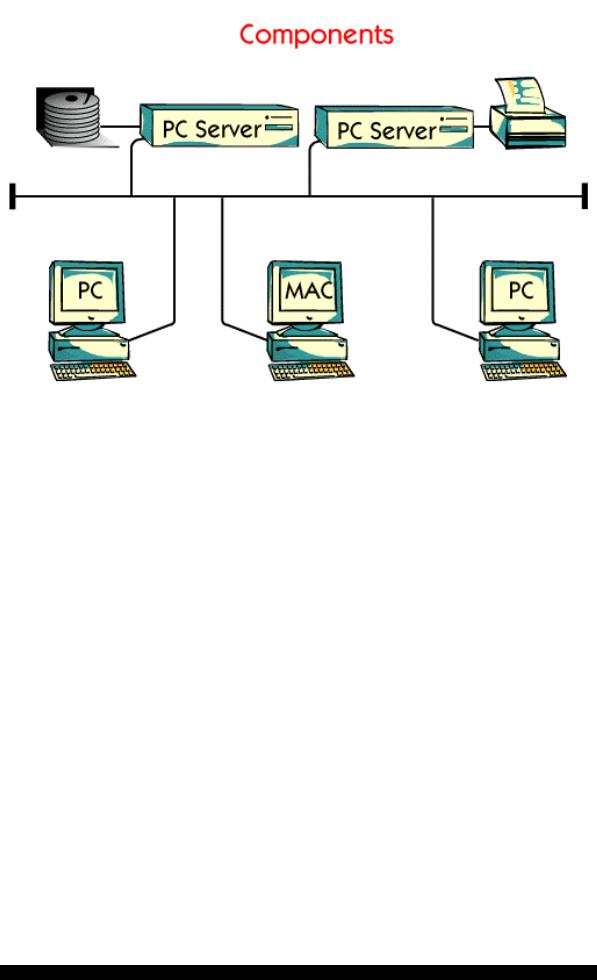
Ch. 3 - PC networks
A PC network is used to share resources such as files and printers. A PC network is normally based on Ethernet or Token Ring and consists of a number of components:
1.Cabling is used to physically connect the components together. A common type of cable used in both Ethernet and Token Ring is twisted pair.
2.Clients such as PCs or Macintoshes can be used together on the same network. One often distinguishes between the hardware and the software components of a client. One important hardware component is the NIC, which stands for Network Interface Card, inside the client. The software component responsible for communication consists of two parts: the operating system and communication software. These two together are called Network Operating System. An example of a Network Operating System on a client is DOS and IPX software.
3.Servers are used to share documents and programs. Servers are often dedicated powerful computers. There are different types of Network Operating Systems for a server. Examples are Novell Netware, Windows NT and IBM LANServer.
4.Printers are common components found in a PC network.
5.Gateways, not seen in this picture, are used to translate between two applications or protocols. Gateways are used for communication between different protocols.
2
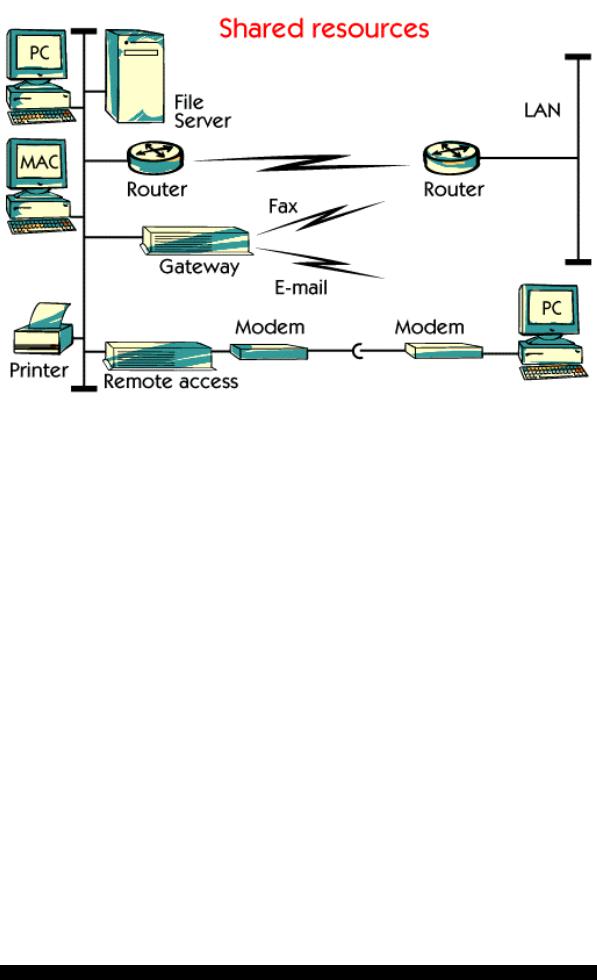
Ch. 3 - PC networks
One of the main reasons for using local networks is to share common resources, such as printers, files, e-mail and devices for communication.
In the picture you see a shared printer and a file server which is used to share files. Routers and gateways are used for communication to other LANs and remote devices such as computers and faxes.
3
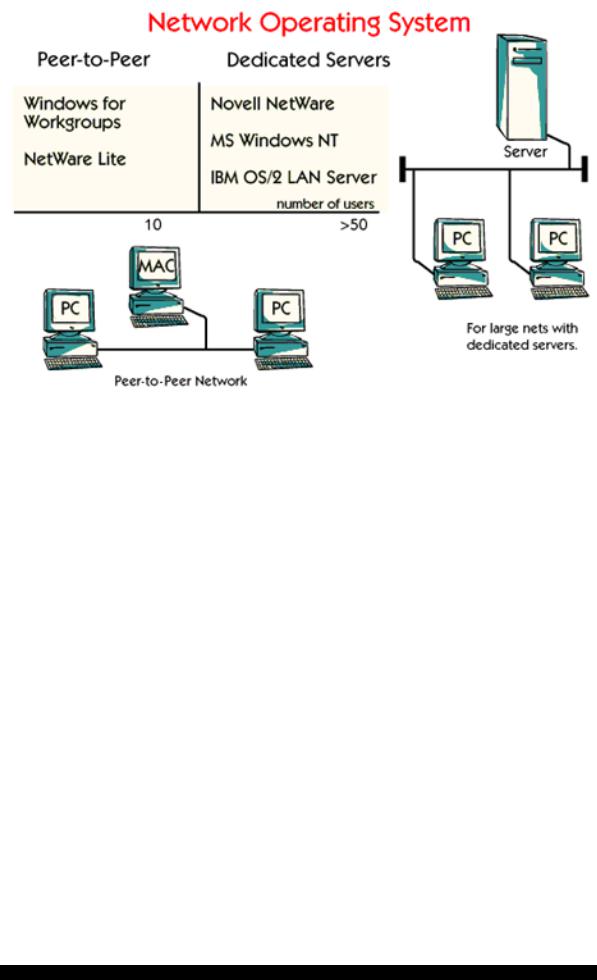
Ch. 3 - PC networks
After the physical network the NOS, Network Operating System, is the most important part in a PC network. The network operating system is responsible for the levels 3 to 7 in the OSI model. This means that NOS is independent of the type of network. It works in the same manner on an Ethernet as a Token Ring.
There are two types of NOS. The first type is called "peer to peer” which means that no dedicated server is needed. The other type is server based and is used for larger, more demanding networks.
There are many vendors with their own types of NOS on the market.
The leading systems for "peer to peer” based NOS are NetWare Lite and Windows for Workgroups.
The leading systems for server based NOS are Novell NetWare, Windows NT and OS/2 LAN Server.
4
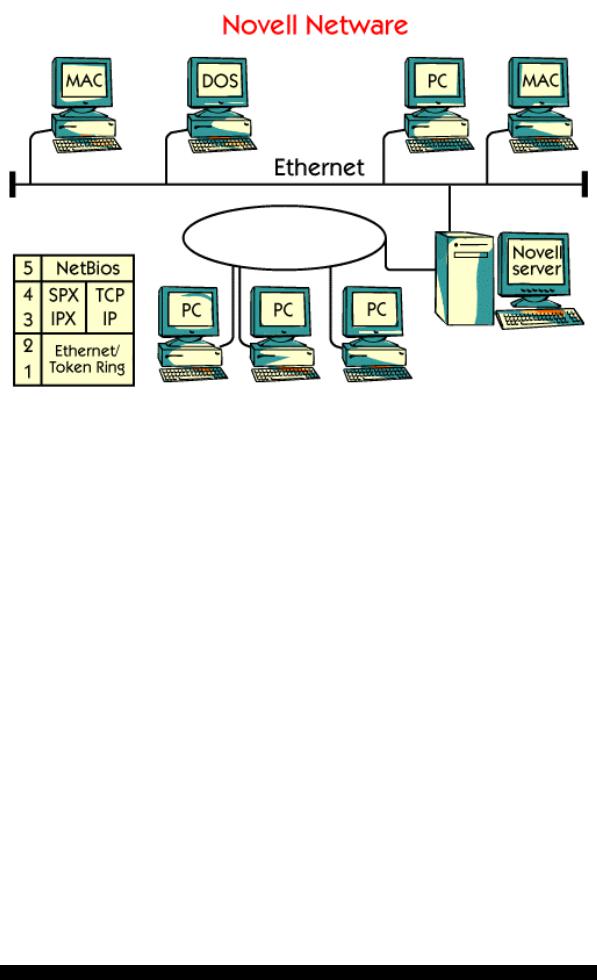
Ch. 3 - PC networks
Novell Netware has for a long time been a market leader of NOS. Netware has been on the market since 1983 and it runs only on Intel processors.
Novell developed NetWare, which is a powerful multisession system. This means that NetWare can handle different parallel sessions as previously only found in larger types of computers.
NetWare is sold in many versions corresponding to the number of users, types of connections and level of security.
The client could be a personal computer with or without its own hard disc and with an operating system such as MS-DOS, OS/2, MacOS or UNIX.
Netware handles both IPX and TCP/IP traffic over Ethernet or Token Ring.
5
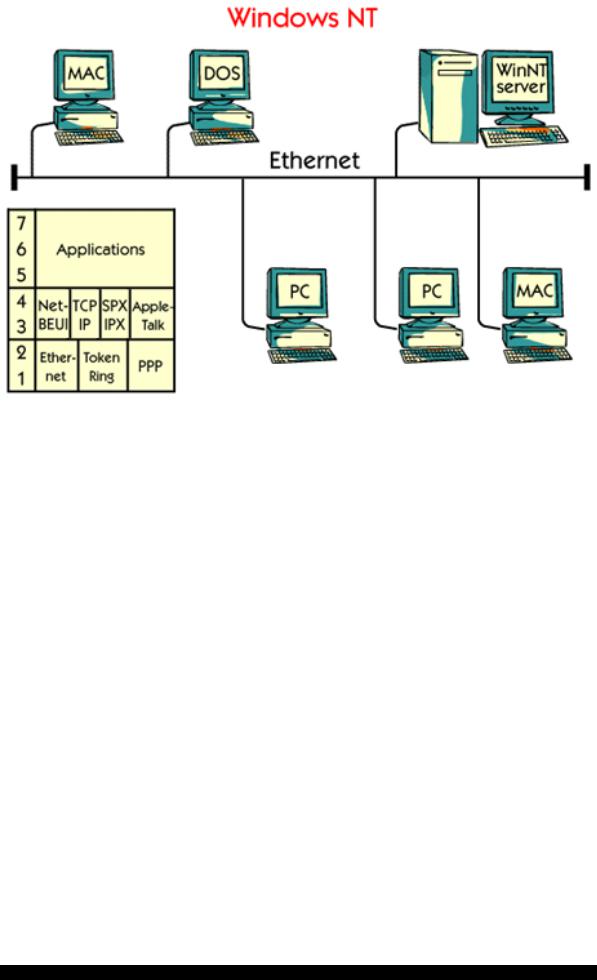
Ch. 3 - PC networks
In the summer of 1993 Microsoft released their new Network Operating System, NT for workstations. The NT server followed in the autumn of 1994. The network protocols used in NT are NetBEUI, TCP/IP, IPX and AppleTalk, which gives NT the opportunity to communicate with different types of network platforms. Windows NT is a multisession operating system. NT can run on different types of processors like Intel, Alpha and PowerPC. NT has also a good support for remote dial-in communication, called RAS (Remote Access Service).
NT is normally used on top of Ethernet, but it is also possible to use in Token Ring.
6
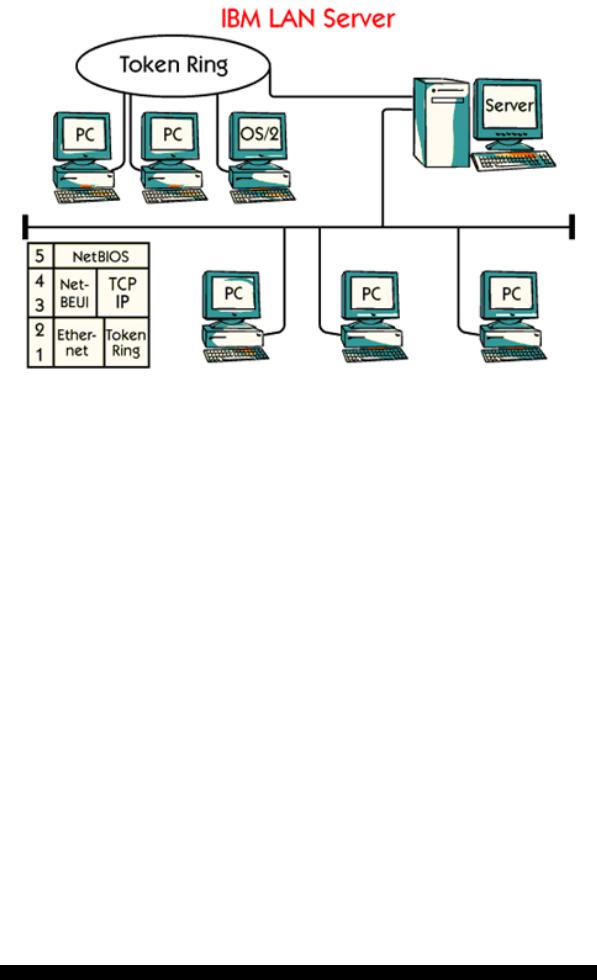
Ch. 3 - PC networks
The LAN Server was in the beginning, a product developed by IBM and Microsoft. After a time Microsoft left this project but IBM developed it further and called it IBM LAN Server. IBM chose to run OS/2 on a dedicated server. IBM LAN Server supports DOS and Windows based clients. The supported transport protocols are NetBEUI and TCP/IP. This gives the LAN Server the opportunity to be used in mixed environments. The IBM LAN Server is not as common as NetWare or NT.
7
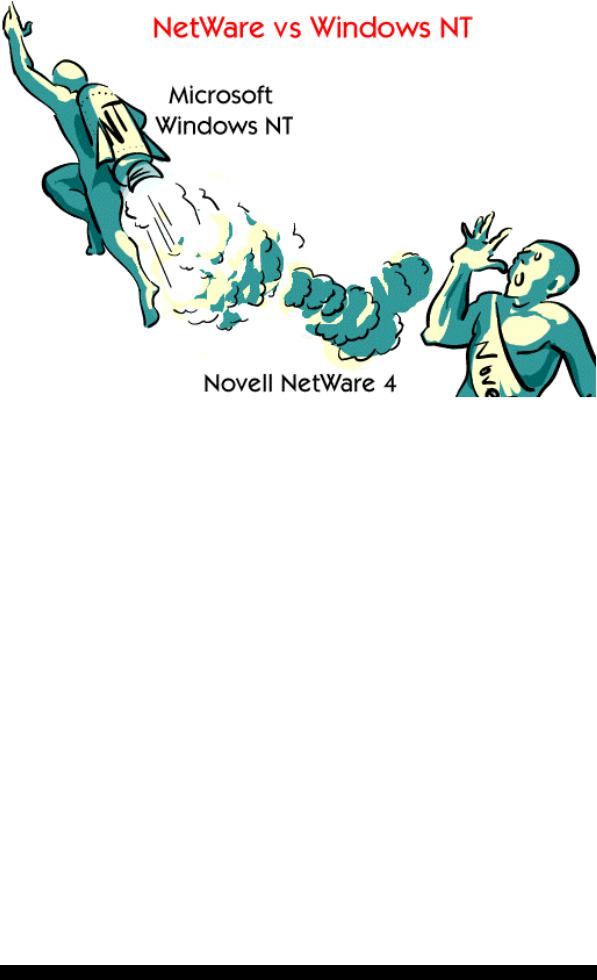
Ch. 3 - PC networks
The two largest competitors on the NOS market are Novell with its NetWare and Microsoft with Windows NT. Microsoft is taking more and more of the NOS market and growing very fast.
Microsoft solutions are a little bit cheaper than the solutions from Novell. But the real advantage is that Windows NT supports different processors and many protocols.
8
